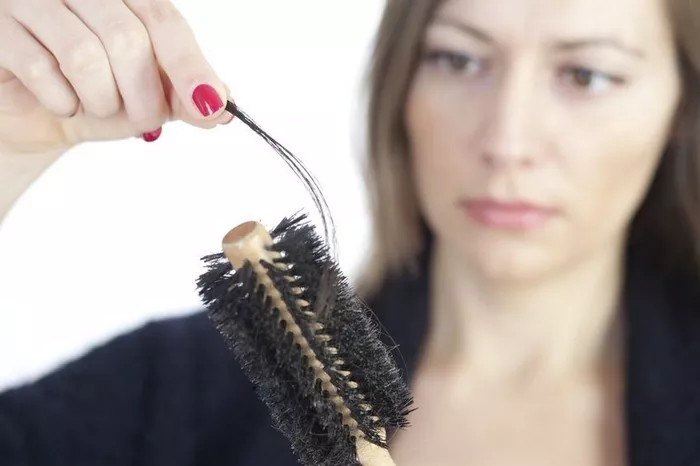Hair loss, a distressing phenomenon, often associated with aging, can strike individuals at any stage of life, including early adulthood. While it’s commonly perceived as a consequence of advancing years, experiencing hair fall in early age can be particularly disconcerting and raise numerous concerns. In today’s society, where appearances hold significant social currency, hair loss can impact self-esteem, confidence, and overall quality of life. Consequently, understanding the underlying reasons behind premature hair loss becomes crucial for effective management and potential prevention. This comprehensive article delves into the multifaceted factors contributing to hair fall in early age, exploring biological, environmental, genetic, and lifestyle influences, and provides insights into potential strategies for mitigation.
1. Genetic Predisposition: Unraveling the Inheritance
Genetics plays a pivotal role in determining an individual’s susceptibility to premature hair loss. Androgenetic alopecia, commonly known as male or female pattern baldness, is the most prevalent form of hereditary hair loss. This condition is characterized by a progressive thinning of the hair follicles, leading to miniaturization and eventual cessation of hair growth. While the inheritance pattern of androgenetic alopecia is complex, with contributions from both maternal and paternal lineages, individuals with a family history of early-onset baldness are at heightened risk.
2. Hormonal Imbalances: The Regulatory Disarray
Hormonal fluctuations can wreak havoc on the delicate equilibrium governing hair growth cycles. Androgens, particularly dihydrotestosterone (DHT), exert a significant influence on hair follicle function. In genetically predisposed individuals, heightened sensitivity of hair follicles to DHT can lead to a phenomenon known as follicular miniaturization. This process entails the progressive shrinking of hair follicles, resulting in finer, shorter, and ultimately, absent hair strands. Hormonal imbalances, commonly observed in conditions such as polycystic ovary syndrome (PCOS) and thyroid disorders, can exacerbate hair loss in both men and women, underscoring the intricate interplay between endocrine function and hair health.
3. Environmental Stressors: Battling the External Aggressors
The modern lifestyle exposes individuals to an array of environmental stressors that can exact a toll on hair health. Exposure to pollutants, ultraviolet radiation, and harsh chemicals found in hair care products can compromise the integrity of the hair shaft and impede follicular function. Moreover, dietary deficiencies stemming from poor nutrition or restrictive eating habits can deprive the hair follicles of essential vitamins, minerals, and proteins vital for robust growth. Incorporating a balanced diet rich in micronutrients, antioxidants, and protein sources can fortify the hair from within and mitigate the adverse effects of environmental stressors.
4. Psychological Stress: Unraveling the Mind-Body Connection
The intricate interplay between psychological stress and hair loss has been well-documented in scientific literature. Chronic stress triggers a cascade of neuroendocrine responses, culminating in the dysregulation of hair growth cycles. Telogen effluvium, a type of hair loss characterized by excessive shedding, often manifests in the aftermath of significant stressors such as childbirth, surgery, or emotional trauma. Elevated levels of stress hormones, namely cortisol, can disrupt the normal progression of hair follicles through the anagen (growth) phase, precipitating premature entry into the telogen (resting) phase and subsequent shedding. Adopting stress-management techniques such as mindfulness, meditation, and regular exercise can ameliorate the impact of psychological stressors on hair health.
5. Autoimmune Disorders: Unveiling the Immune-Mediated Assault
Autoimmune disorders, characterized by the aberrant activation of the immune system against self-tissues, can manifest in various forms of hair loss. Alopecia areata, a prevalent autoimmune condition, manifests as discrete patches of hair loss on the scalp, eyebrows, or other body regions. The pathogenesis of alopecia areata involves the targeting of hair follicles by autoreactive T lymphocytes, resulting in the abrupt cessation of hair growth. While the precise triggers remain elusive, genetic predisposition, environmental factors, and immunological dysregulation are believed to contribute to disease onset. Treatment modalities for alopecia areata encompass topical corticosteroids, immunomodulatory agents, and emerging biologic therapies aimed at curbing the autoimmune assault on hair follicles.
6. Lifestyle Factors: Navigating the Path to Hair Wellness
The adoption of healthy lifestyle practices can exert a profound influence on hair health and vitality. Regular physical activity promotes circulation, ensuring the efficient delivery of oxygen and nutrients to hair follicles. Conversely, sedentary behavior and poor circulation can compromise follicular function and impede hair growth. Additionally, tobacco use and excessive alcohol consumption have been implicated in the pathogenesis of hair loss, underscoring the importance of lifestyle modifications in preserving hair integrity. Adequate sleep, proper hydration, and stress management strategies complement a holistic approach to hair wellness, fostering an environment conducive to optimal follicular function.
7. Medications and Medical Treatments: Navigating the Therapeutic Landscape
Certain medications and medical treatments can precipitate hair loss as an adverse effect, posing a dilemma for individuals grappling with underlying health conditions. Chemotherapeutic agents, utilized in the treatment of cancer, target rapidly dividing cells, including hair follicles, leading to widespread alopecia. Similarly, anticoagulants, antithyroid drugs, and oral contraceptives have been implicated in drug-induced hair loss, necessitating careful consideration of risk-benefit profiles. Consultation with healthcare providers and pharmacists can provide invaluable insights into potential hair-related side effects of prescribed medications and alternative treatment options.
Conclusion: Charting a Path Forward
Premature hair loss, a multifaceted phenomenon influenced by genetic, hormonal, environmental, and lifestyle factors, necessitates a comprehensive understanding for effective management and potential prevention. By elucidating the underlying mechanisms driving hair fall in early age, individuals can adopt proactive measures to safeguard hair health and mitigate the adverse effects of predisposing factors. Embracing a holistic approach encompassing dietary optimization, stress management, and prudent lifestyle choices empowers individuals to navigate the challenges posed by premature hair loss and embark on a journey towards hair wellness and vitality. Through ongoing research endeavors and therapeutic innovations, the quest for effective interventions in the realm of hair loss continues, offering hope to individuals grappling with this prevalent and impactful condition.


